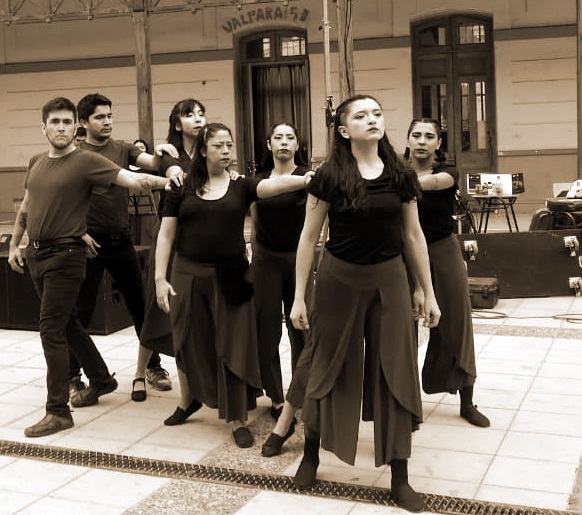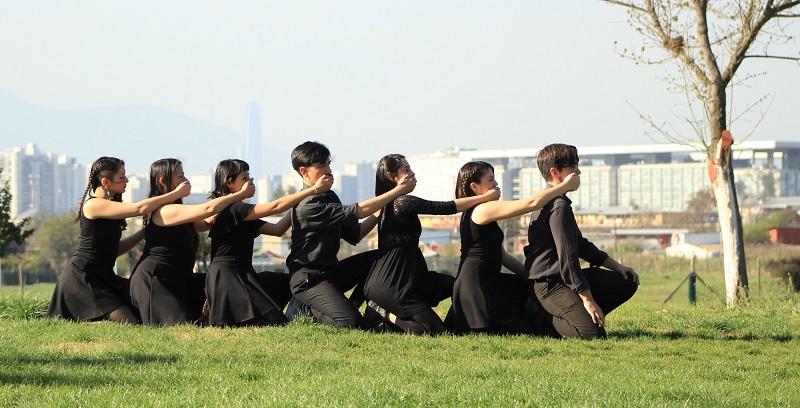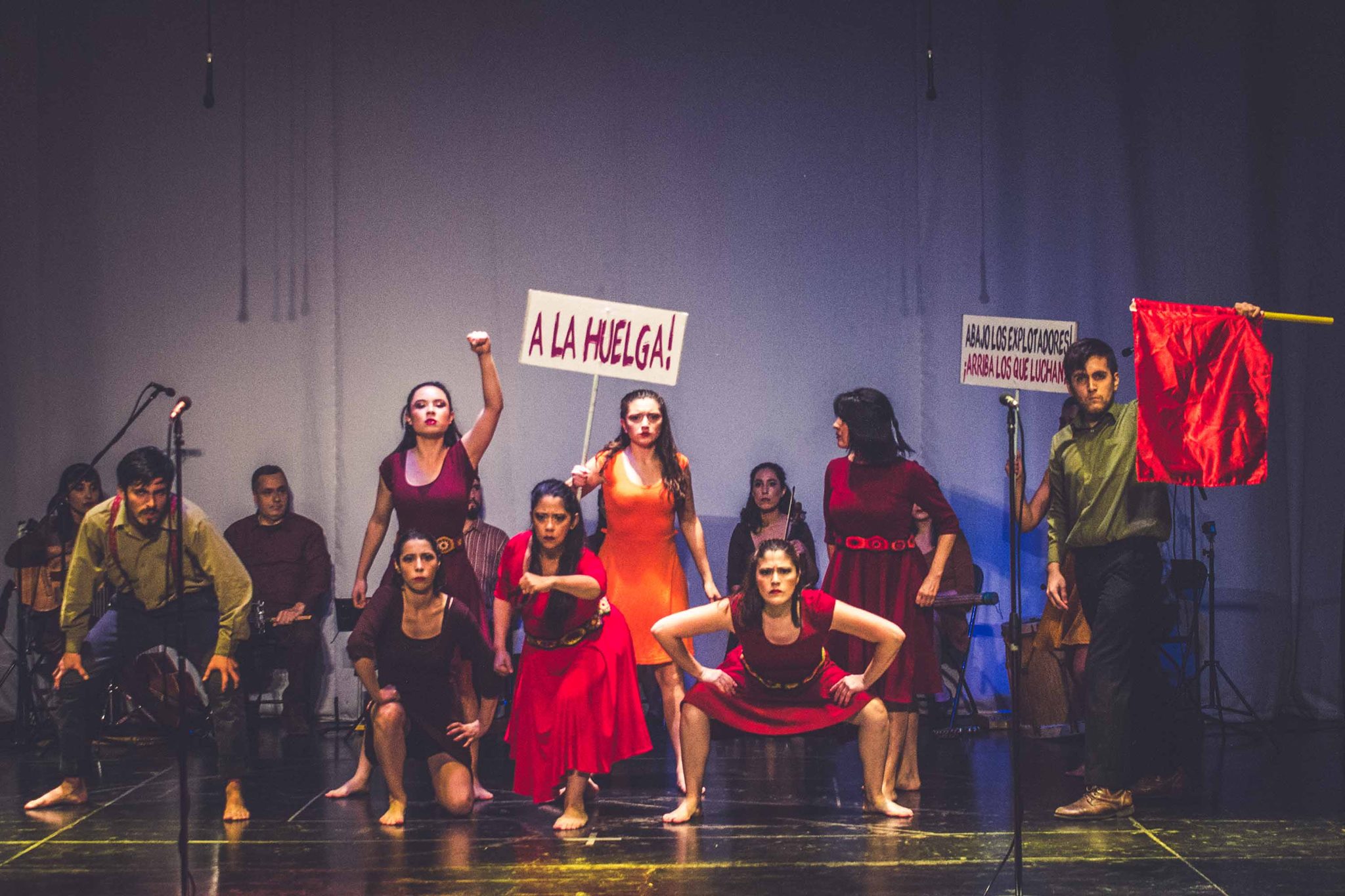The following is a (unofficial) translation of an interview published in the 83rd issue of the newspaper El Pueblo in August 2019 with the Chilean music, dance and theater ensemble “La Ventolera” [Eng.: “The gust of wind”]. It has a particular focus on the class principles and democratic values within culture.
The Ensemble La Ventolera: Art in the service of the people
Combining music, dance and theater, La Ventolera moves its audience, telling the stories of the fighters of the people. Their latest work, entitled "Daughters of the People", strives to reconstruct the brave stories of four women who served the classes of the people and were examples of the revolution and the emancipation of women: Aracely Romo and Teresa Flores in Chile, Juana Azurduy of the Upper Peru territory and Olga Benario in Germany.
El Pueblo: Who are you and how was the group born?
Today we are eight musicians and seven dancers. We are students and workers who dedicate our other time to developing art. We do not have artistic studies, but we show that ordinary people can make art for our people. We do not have artistic education, but demonstrate that common and regular people can make art for our people.
We initiated the “Ballet Folclórico de la Universidad de Santiago (Bafusach)” [“ Folkloric Ballet of the University of Santiago”]. Knowing that Víctor Jara was a functionary of the State Technical University (now Usach), we wanted to resume his work and set up “Herminda de la Victoria”. For this, we set up another ensemble, in which internal differences led to definitive separation.
Many of those that lived the experience of Herminda are still together. Listening to Víctor Jara y Quilapayún, we arrived at the name, understanding La Ventolera as strong wind, that uplifts the ground and stirs up, that is uncomfortable. We don’t want to be recognized as pretty art, but as something that disturbs. It has become a tradition that during some important presentations there is a Ventolera breaking, it even rained on us!

El Pueblo: You realize your presentations in free air, which is part of the principles of your ensemble. Tell us about them.
Four principles guide us in our work:
The democratic centralism has been in effect and permitted us to advance. On one hand, we have the artistic leadership, which brings the decisions and proposals together. Then, there are assembly spaces, where we all express our opinions and discuss; with this this ideas the leadership takes the decisions. We are always in an internal process of debate and struggle. It happens often times, that each one wants something distinct or represents the ensemble in an individual form; this principle has not been easy to implement.
The self-sustainment for the resources for staging a scene, costumes, etc. is justified. We don’t use the word self-management, since it refers to generating resources in an isolated manner. We do not charge for a presentation, so we do other activities such as rounds or raffles that serve to get closer to the people, while we rely on the masses.
The use of public places is a rejection of the stages. We do not present art for a few, but for everyone. Since the initiation we wished to portray the struggles of the people, its conquests. That is why we present in public places, because it is intended to reach the masses. We also look into including spaces of interaction.
The struggle against ego-centrism is a principal that we are always developing. There is a lot of unipersonal protagonism in the art world. All of us participated in companies where there were irreplaceable artists. We want that here all can perform also the role of the other. It has not been easy, but it is necessary to better serve the people and not the individual interests.

El Pueblo: What has led you to perform tge works “Daughters of the people”?
We wanted to emphasize the courage and determination of the struggle of the principally Latin American women, as an example of the emancipation of the working class and of the women, and encountered four tremendous examples:
The story of Teresa Flores has been one of the most difficult to reconstruct, since what is best known is that she was the partner of Luis Emilio Recabarren. Investigating we have been able to reconstruct her leadership in “the strikes of the unlit ovens”. The women of that time of the saltpeter mines realized that in their double oppression, because they were working class and were women, they had nothing to lose. They conquered immediate improvements using their creativity, urged their partners to go on strike, grabbed for the butt of the cops to intimidate them, forced managers of the grocery stores to lower food prices or threw themselves on the train tracks to prevent the arrival of the strikebreakers.

Aracely Romo was a young woman who participated in her beginnings in struggle for the recognition of the fallen combatants and after a while she understood that the greatest homage was to take the responsibility of the armed struggle into her own hands as well. She was a part of the MIR and had to part from what she knew so to organize and combat clandestinely.
Juana Azurduy fought against the armed forces of royalty, taking position for the original peoples. She was an “Indian Chola” from the territory of Upper Peru, that today makes up part of Bolivia and Argentine, where she is recognized as a heroine of the independence. She formed a army of women and was recognized for her courage in the defense of the territory, assuming high positions in the independence army. Movies and Songs exists, that pay homage to her.
Finally, the story of Olga Benario, who was born in Germany and fought the Nazis. Exiled to the Union of Soviet Socialist Republics (USSR), she was trained as a military cadre and was appointed as bodyguard of Luis Carlos Prestes, a Brazilian communist also exiled. With the help of Olga, he managed to enter Brazil clandestinely to give an impulse the revolt and the constitution of the Communist Party. In these struggles both are arrested and Olga is deported to Germany, where she enters a concentration camp and realizes that she expects a child from her partner.

